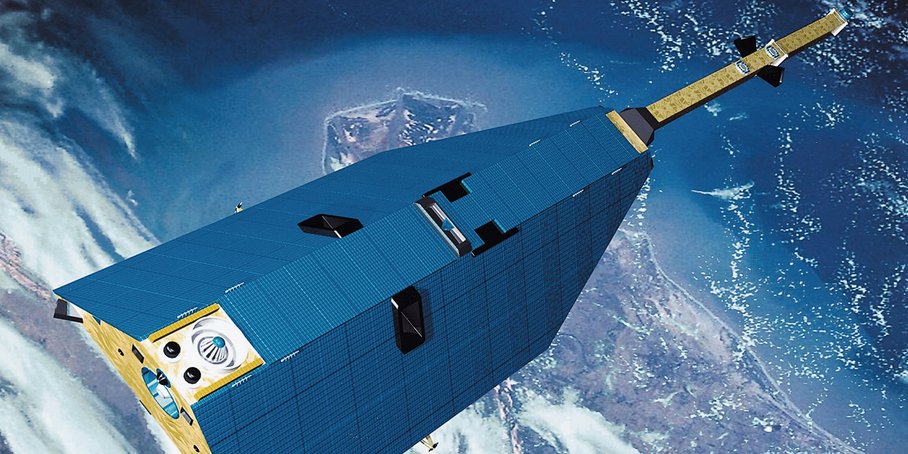Twenty-five years ago, on 15 July 2000, the GFZ-led CHAMP satellite mission was launched into space from the Plesetsk Cosmodrome in Russia aboard a Russian Cosmos rocket. The satellite orbited the Earth in a relatively low, near-polar orbit at an initial altitude of around 460 kilometres, with a tendency to descend. CHAMP stands for CHAllenging Minisatellite Payload. It carried a range of high-precision measuring instruments on board: a magnetometer, an acceleration sensor, a star sensor, a GPS receiver, a laser retro-reflector and an ion drift metre. At the time, they provided unique data on the Earth's gravitational field, magnetic field and atmosphere, which was made available to the scientific community. The CHAMP mission was initially planned to last five years. In fact, it only ended on 19 September 2010, when the satellite burned up in the Earth's atmosphere after ten years, two months, four days and 58,277 orbits.
Important measurement series on gravity and magnetic fields
CHAMP's multifunctional and complementary equipment and its special orbital characteristics enabled a ten-year measurement series that was unique at the time, in which high-precision gravimetric and magnetic field data were recorded simultaneously for the first time. Both the spatial and temporal variations of the two fields could be measured.
This was an important basis for investigations of the structure and dynamics of the Earth's interior, from the Earth's core through the mantle to the crust, but also for more accurate observation of ocean circulation, global sea level changes and short-term fluctuations in the global water cycle, as well as interactions with weather and climate.
The CHAMP mission ushered in a new era of geopotential research (Earth's gravitational potential) and became the most significant source of data for the International Decade of Geopotential Research, proclaimed in 1997 by the International Association of Geomagnetism and Aeronomy (IAGA).
Significance for atmospheric research – for weather and climate
CHAMP also brought about significant breakthroughs in atmospheric research and became a pilot mission for the pre-operational application of GPS measurements for atmospheric and ionospheric research, weather forecasting and space weather observation.
A special GPS receiver provided by the Jet Propulsion Laboratory (JPL) in the USA enabled GPS radio occultation measurements (GNSS-RO) to be taken. Using a special measurement geometry, radio signals that have travelled through space with and without planetary atmosphere are compared with each other.
GNSS-RO data is used worldwide, primarily in weather forecasting and climate research. It can be used to derive accurate and globally distributed vertical profiles of atmospheric parameters such as temperature, water vapour and electron density in the ionosphere. Special advantages of the method are its independence from weather conditions, long-term stability, global availability and high accuracy combined with high vertical measurement resolution.
Researchers at the GFZ have played a key role in developing GNSS-RO technology and have made groundbreaking contributions. The CHAMP mission played an outstanding role in this. It provided the first operationally available GNSS-RO data that was evaluated in near real time. This was made possible by the GFZ's polar satellite receiving antenna on Spitsbergen, which was used for data transmission. The CHAMP data has been used since 2006 to improve global weather prediction models.
Background CHAMP mission
The CHAMP research satellite was a project of the former GeoForschungsZentrum Potsdam, now the GFZ Helmholtz Centre for Geosciences, and the German Aerospace Centre (DLR). International partners from the USA and France were involved in the form of equipment provision. Jena-Optronik GmbH (JOP) was responsible for building the satellite.
